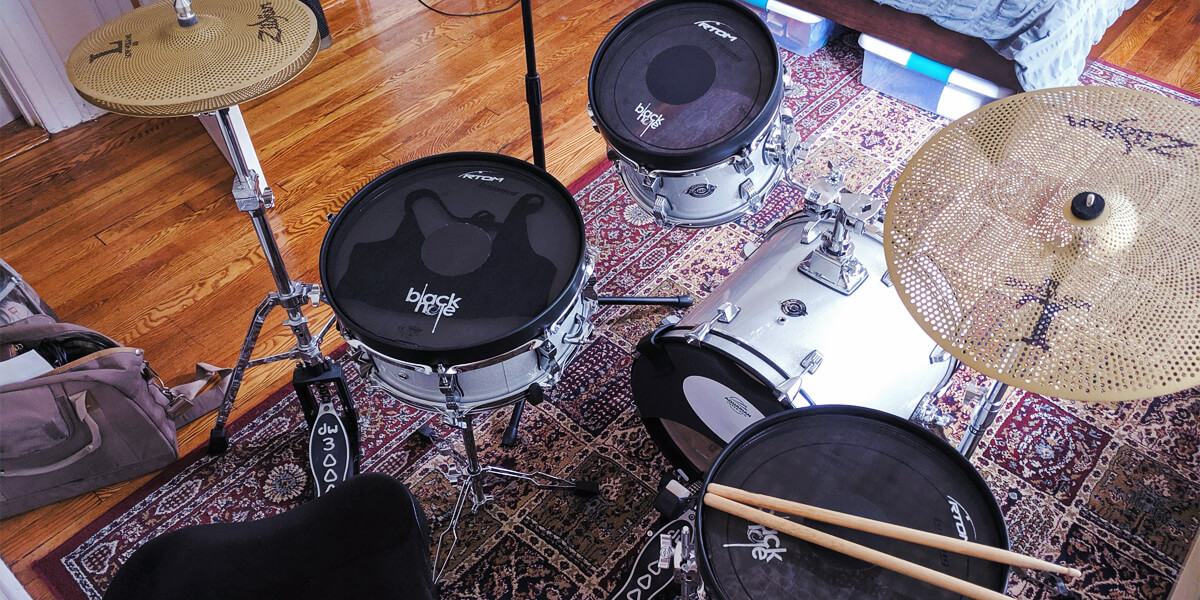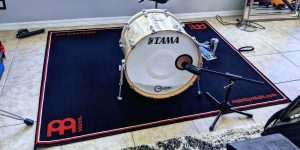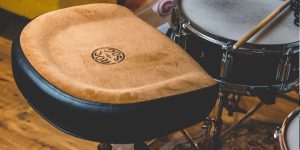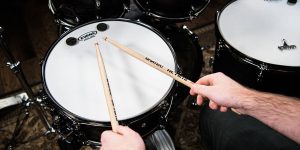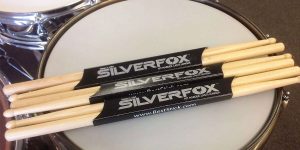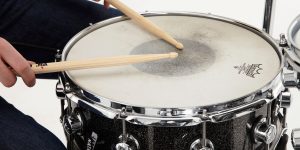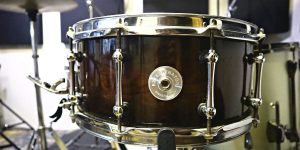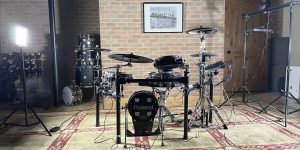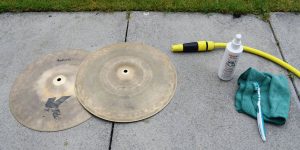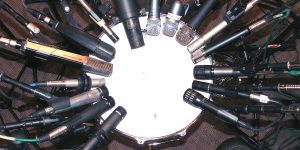Drums and cymbals are among the loudest musical instruments, and their sound can easily disturb other people during home practice and rehearsals. Therefore, it is crucial to make them quieter to reduce noise and avoid causing inconvenience.
Making drums and cymbals quieter is essential for protecting the musician’s hearing, maintaining healthy relationships with the community, and enabling musicians to practice effectively in small spaces.But how to make drums quieter? There are several ways, such as using noise-reducing pads, electronic drum sets, or lower-volume cymbals.
In this article, I will provide practical tips and techniques for reducing the volume of drums without compromising their sound quality or feel. It will cover various methods for muffling drums, using electronic drums, and soundproofing practice spaces.
Drum muting pads
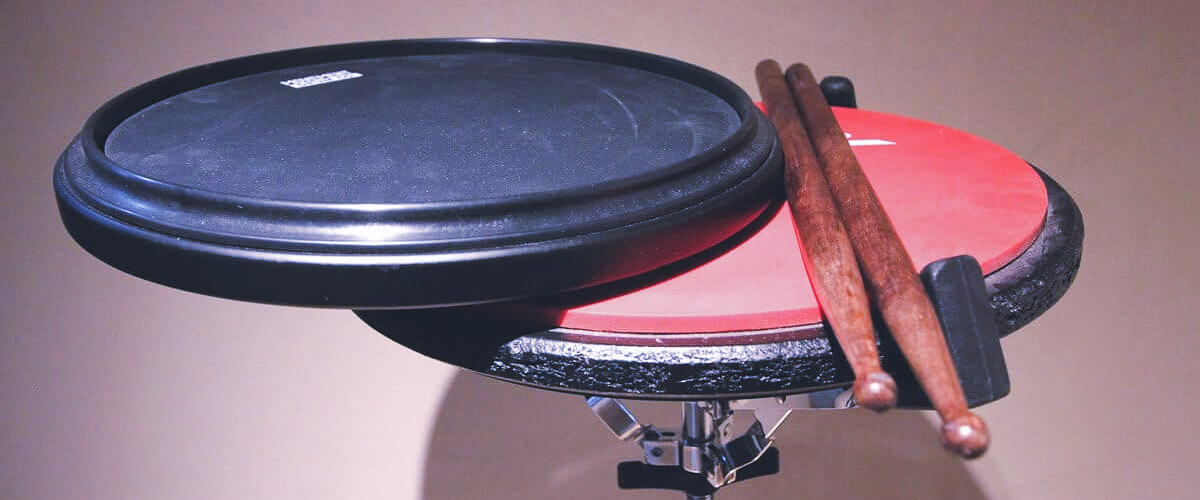
Drum mute pads are accessories placed on top of the drumhead for acoustic drum noise reduction. They are available in various sizes to fit different drum sets and cymbals. In addition, they are designed to be easily removed and reattached, making them a convenient option for practice and rehearsal.
When placed on the drumhead, the muting pad absorbs the sound energy from the drum’s vibration, reducing the sound volume that reaches the room. This allows the musician to practice low-volume drums.
There are several types of drum muting pads available on the market, each with its own unique characteristics and benefits. Now, let’s take a look at some of the most popular types of drum muting pads.
| Type of drum muting pads | Features |
|---|---|
| Rubber pads | Made of a dense rubber material. They are designed to absorb sound waves by damping the drumhead’s vibrations. Also, they are durable and long-lasting and are ideal for heavy hitters. |
| Foam pads | Made of a soft, pliable material. Lightweight and easy to install and remove, an affordable option for musicians who need to practice drums quietly without breaking the bank. |
| Mesh pads | Made of a mesh material that covers the drumhead. Lightweight, providing an excellent playing experience, an ideal choice for drummers without sacrificing the feel and response of their drums. |
In addition to these popular types, there are also specialty pads available, such as those made of neoprene or silicone. They are designed to be more durable and long-lasting than standard pads, and they can provide additional drum sound-dampening benefits.
Kick drum dampening
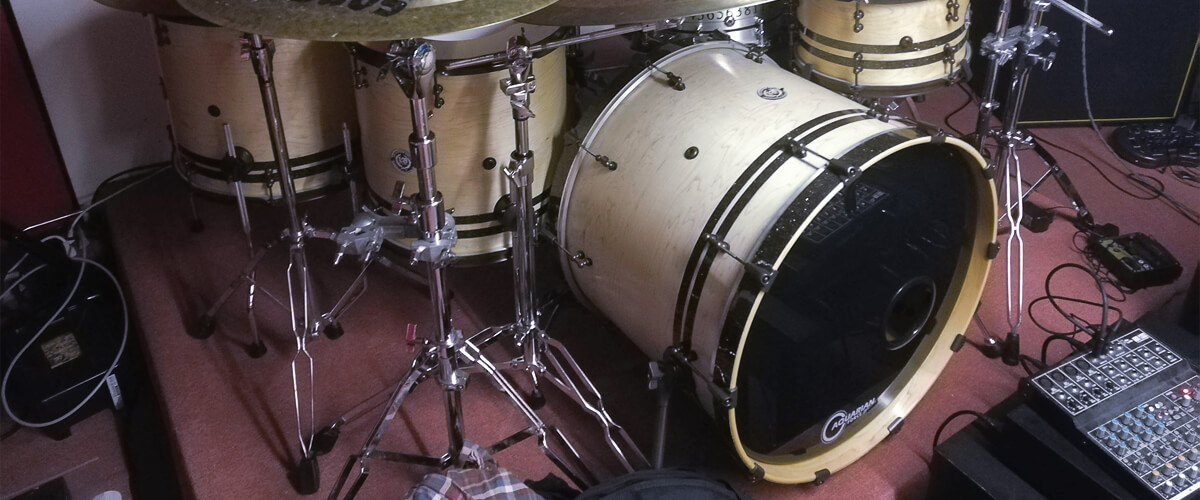
There are several ways to dampen the sound of acoustic drums using everyday household items. Here are some of them which I use occasionally:
- Blankets: Dampen the sound of drums by placing a thick blanket over the drum set. The thicker the blanket, the more effective it will be at reducing the volume of the drums.
- Towels: Place a few folded towels on top of the drumhead. This method is especially useful for reducing the volume of cymbals, which can produce a high-pitched sound that is difficult to control.
- Pillows: Placing pillows inside the drum shells is also effective. The pillows will muffle the sound of the drums by reducing the resonance of the shells. This method particularly works for reducing the volume of bass drums.
- Soundproof curtains: They can be hung around the drum set. These curtains are made of dense materials that are effective at blocking sound and are ideal for musicians who practice regularly in the same space.
When using dampening materials to reduce the volume of acoustic drums, it’s important to position them properly to achieve the desired sound. Here are some tips to help with positioning:
Experiment with placement: Try placing the dampening materials in different positions to find the spot that reduces the volume without sacrificing the tone and resonance of the drums. For example, placing a towel over the cymbals provides more effective sound reduction than placing it on the drumheads.
Don’t overdo it: Too much dampening can deaden the sound of the drums, making them sound dull and lifeless.
Pay attention to the bass drum: It is one of the loudest components of a drum set, so pay special attention to its sound when using dampening materials. Placing pillows or blankets inside the bass drum can help to reduce its volume while still allowing it to produce a full and punchy sound.
Experiment with different materials: Different materials will produce different effects on the sound. For example, a thicker blanket may reduce sound more effectively than a thin towel.
While acoustic drum dampening can be an effective way to reduce drum noise, it does have its limitations. Over-dampening can lead to a dull sound that lacks the punch and tone of acoustic drums. Dampening materials can also affect how drumsticks rebound off the drumheads, making it more difficult to play with precision and speed. As a result, it may not be suitable for live performances where a full and dynamic sound is required. Electronic drum kits or acoustic drum sets with adjustable volume controls may be a better option in these situations.
Making cymbals quieter
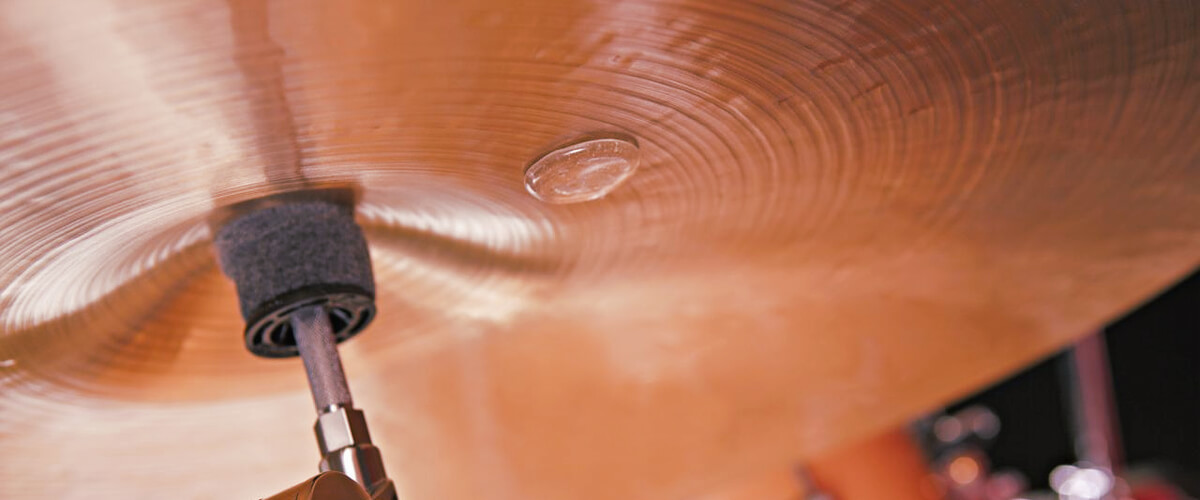
Dealing with this task can be more challenging than with drums due to their unique physical properties. Let me try to explain to you why reducing the volume of cymbals is not a trivial task:
- Size and shape: Cymbals are large, thin, and rounded objects that produce sound when struck, making them difficult to muffle without affecting their tone and resonance. Compared to drums, cymbals are more sensitive to any changes in their physical properties, and even small adjustments can significantly affect their sound.
- High-pitched frequencies: Cymbals produce high-pitched frequencies that are more difficult to control than the lower frequencies produced by drums. These frequencies can easily go through sound barriers and travel farther, making it challenging to reduce the volume of cymbals.
- Variable sound: Unlike drums, cymbals produce a variable sound depending on the location and method of striking. For example, striking the edge of the cymbal produces a brighter and more sustained sound than hitting the center. This variability makes it challenging to achieve consistent and effective dampening.
- Dampening materials: Dampening materials like rubber or foam can effectively reduce the volume of drums, but they can also affect the tone and resonance of cymbals. Using these materials on cymbals can produce a dull and lifeless sound.
There are different methods for making cymbals quieter, and some of them can be effective. For example, consider the following techniques that I developed on my own and received as advice from professionals:
- Cymbal mutes: Cymbal mutes are accessories made of rubber or foam that fit over the cymbal. They are available in different sizes and thicknesses. Some of them are made to fit over the entire cymbal, while others only cover a portion of it.
- Drumstick tape: Applying tape to the drumstick can also reduce the volume of the cymbals by reducing the impact force of the stick. The tape can be placed at the tip of the stick or along the shaft. However, it can affect the balance and feel of the stick, which can impact the drummer’s playing.
- Cloth or fabric: Placing a cloth or fabric over the cymbal can muffle the sound. However, it can affect the tone and resonance of the cymbal.
- Acoustic shields: Large panels or barriers are placed around the drum set to reduce the overall volume of the kit, including the cymbals. These shields can be made of foam, plastic, or plexiglass and can be adjusted to fit the size and shape of the drum set. Sometimes they affect the room’s acoustics and make it more difficult to hear other instruments.
Other strategies for quieter drumming
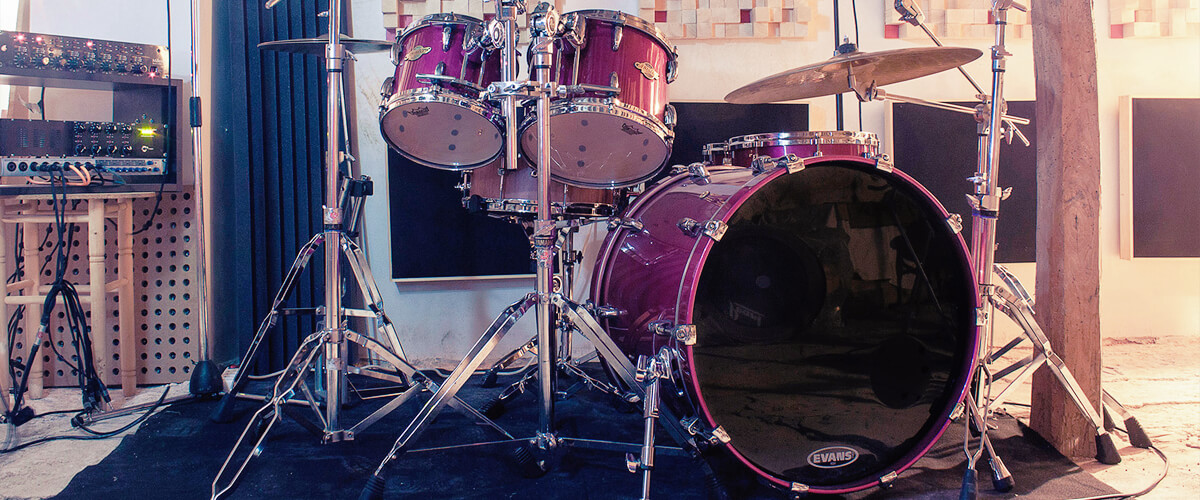
In addition to using muting pads and dampening materials, there are other strategies that you can use to achieve a soundless drum set while maintaining the tone and resonance of your kit. Check out some examples:
- Hot rods: Drumsticks made of bundled dowels or thin sticks that produce a softer and more muted sound. Hot rods are ideal for low-volume playing.
- Brushes: Drumsticks with soft bristles made of wire, nylon, or synthetic materials that produce a whisper-quiet sound. They are particularly effective in producing a delicate and nuanced sound.
- Multi-rods: Drumsticks made of bundled dowels. They are available in different sizes and densities, and they can be used to produce different sounds and dynamics.
- Electronic drum kits: Excellent option to practice or perform quietly. Electronic drum kits are equipped with rubber or mesh pads that simulate the sound and feel of acoustic drums.
Using electronic drum kits for quiet practice offers the ability to practice without disturbing others, access to a variety of drum sounds and kits, and the ability to practice with headphones for a more immersive experience. They are also easier to transport and set up compared to acoustic drums, making them ideal for small venues.
There are two main types of electronic drum kits: pad-based and mesh-head. Pad-based kits use rubber or silicone pads to simulate the feel and response of acoustic drums, while mesh-head kits offer a realistic feel and rebound. Mesh-head kits are more expensive than pad-based kits.
Low-volume cymbals and drumheads are specially designed to produce a lower volume than their traditional counterparts, making them ideal for practicing in a quiet environment or recording without overpowering other instruments or vocals. They are made of metal alloy and have fewer overtones and less sustain than regular cymbals. A denser foam layer reduces the drum’s resonance and overtones without affecting the feel of the drum.
FAQ
Can I use electronic drum kits for live performances or rehearsals?
Yes, many electronic drum kits are designed with features that make them suitable for live performance, such as built-in sound modules, USB connectivity, and MIDI compatibility.
Can I use low-volume cymbals and drumheads with traditional drumsticks?
Yes, low-volume cymbals and drumheads can be used with traditional drumsticks. However, they may feel different than traditional cymbals and drumheads and may require some adjustment in playing technique.
How do I avoid damaging my drums or cymbals when making them quieter?
To avoid damaging drums or cymbals when making them quieter, use appropriate materials that will not scratch or dent the surface of the instrument and avoid over-dampening the instrument.
Can I use drum mutes on any type of drum?
Drum mutes can be used on most types of drums, including snare drums, bass drums, and toms. Ensure that the drum mutes fit properly on the drum to avoid damage or interference with the drum’s natural resonance.

